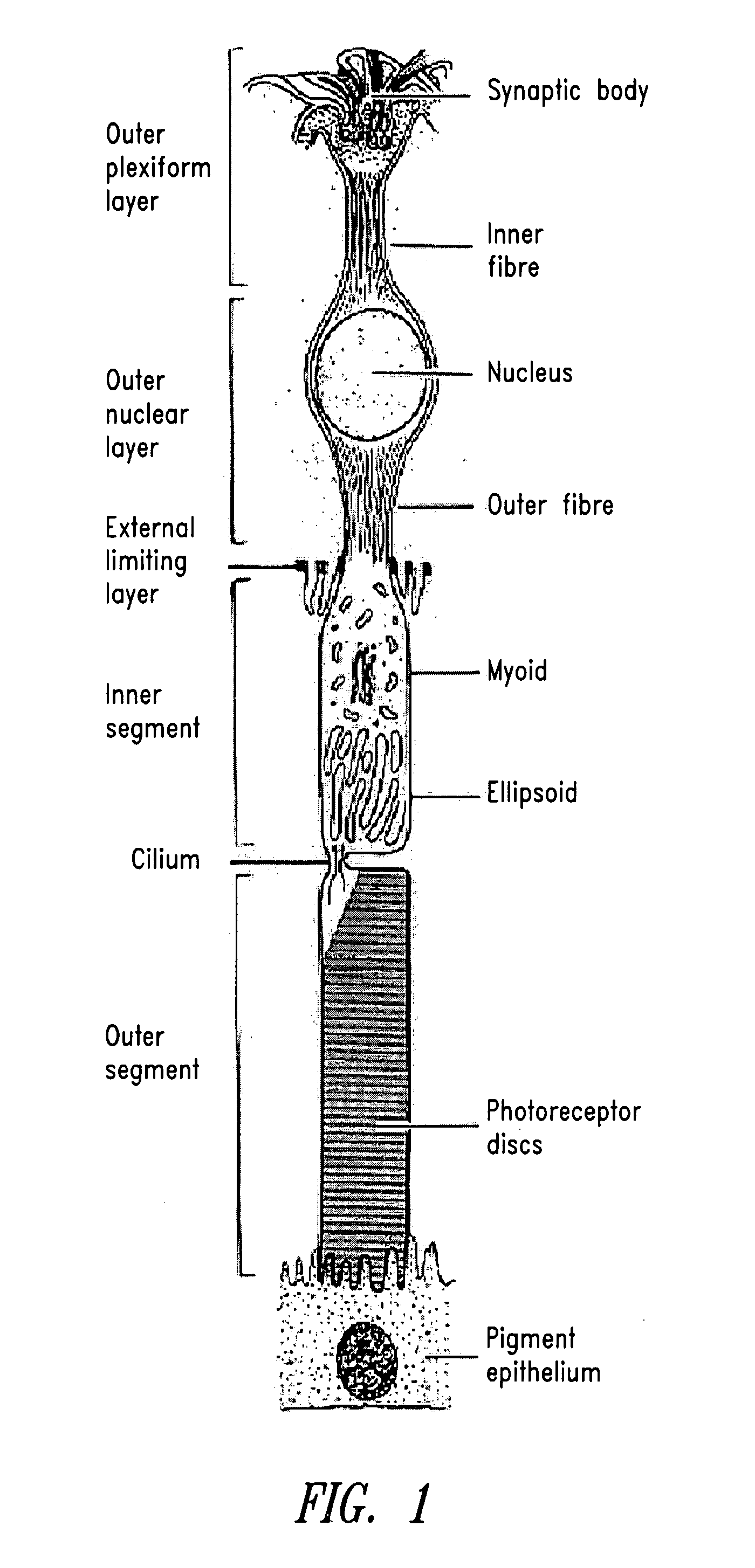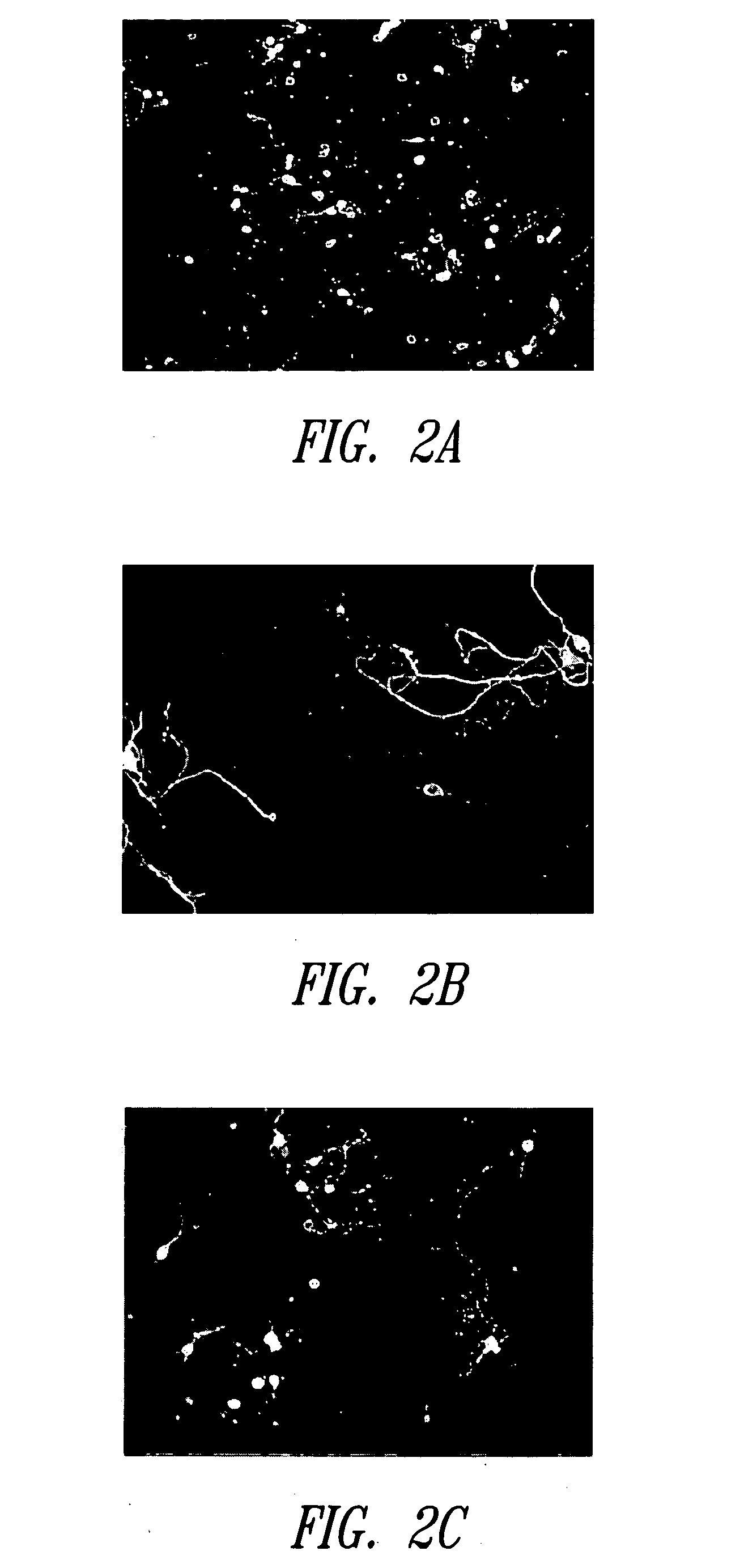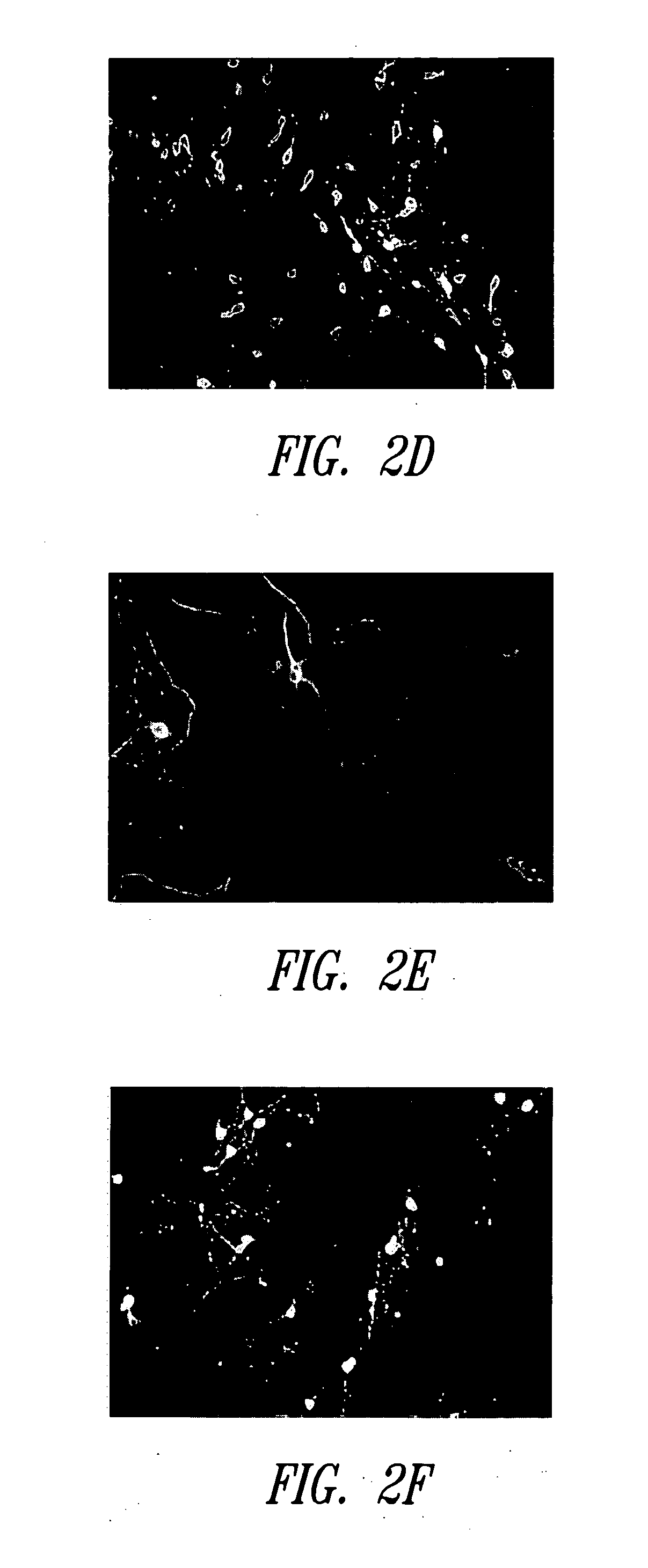Extended primary retinal cell culture and stress models, and methods of use
a stress model and cell culture technology, applied in the field of cell culture systems, can solve the problems of retinal cells to die, blindness worldwide, and more serious vision loss
- Summary
- Abstract
- Description
- Claims
- Application Information
AI Technical Summary
Benefits of technology
Problems solved by technology
Method used
Image
Examples
example 1
Preparation of Retinal Neuronal Cell Culture System
[0176] This Example describes methods for preparing a long-term culture of retinal neuronal cells.
[0177] All compounds and reagents were obtained from Sigma Aldrich Chemical Corporation (St. Louis, Mo.) except as noted.
[0178] Retinal Neuronal Cell Culture
[0179] Porcine eyes were obtained from Kapowsin Meats, Inc. (Graham, Wash.). Eyes were enucleated, and muscle and tissue were cleaned away from the orbit. Eyes were cut in half along their equator and the neural retina was dissected from the anterior part of the eye in buffered saline solution, according to standard methods known in the art. Briefly, the retina, ciliary body, and vitreous were dissected away from the anterior half of the eye in one piece, and the retina was gently detached from the clear vitreous. Each retina was dissociated with papain (Worthington Biochemical Corporation, Lakewood, N.J.), followed by inactivation with fetal bovine serum (FBS) and addition of 1...
example 2
White Light Induced Stress of Retinal Neuronal Cells
[0183] This Example describes the effects of white light-induced stress on retinal neuronal cells neuronal cells cultured in an extended retinal cell culture system.
[0184] White Light-Induced Stress
[0185] A device was built to uniformly deliver light of specified wavelengths to specified wells of the 24-well plates. The device contained a fluorescent cool white bulb (GE PIN FC12T9 / CW) wired to an AC power supply. The bulb was mounted inside a standard tissue culture incubator. White light stress was applied by placing plates of cells directly underneath the fluorescent bulb. The CO2 levels were maintained at 5%, and the temperature at the cell plate was maintained at 37° C. The temperature was monitored by using thin thermocouples.
[0186] The light intensities for all devices were measured and adjusted using a light meter from Extech Instruments Corporation (P / N 401025; Waltham, Mass.). Mature retinal cell cultures were prepared...
example 3
Blue Light Induced Stress of Retinal Neuronal Cells
[0196] This Example describes the effects of blue light-induced stress on retinal neuronal cells cultured in an extended retinal cell culture system
[0197] Blue Light-Induced Stress
[0198] Retinal cell cultures were prepared as described in Example 1. After culturing the cells for 1 week, a blue light stress was applied. Blue light was delivered by a custom-built light-source, which consisted of two arrays of 24 (4×6) blue light-emitting diodes (Sunbrite LED P / N SSP—01TWB7UWB12), designed such that each LED was registered to a single well of a 24 well disposable plate. The first array was placed on top of a 24 well plate full of cells, while the second one was placed underneath the plate of cells, allowing both arrays to provide a light stress to the plate of cells simultaneously. The entire apparatus was placed inside a standard tissue culture incubator. The CO2 levels were maintained at 5%, and the temperature at the cell plate w...
PUM
| Property | Measurement | Unit |
|---|---|---|
| time | aaaaa | aaaaa |
| time | aaaaa | aaaaa |
| time | aaaaa | aaaaa |
Abstract
Description
Claims
Application Information
 Login to View More
Login to View More - R&D
- Intellectual Property
- Life Sciences
- Materials
- Tech Scout
- Unparalleled Data Quality
- Higher Quality Content
- 60% Fewer Hallucinations
Browse by: Latest US Patents, China's latest patents, Technical Efficacy Thesaurus, Application Domain, Technology Topic, Popular Technical Reports.
© 2025 PatSnap. All rights reserved.Legal|Privacy policy|Modern Slavery Act Transparency Statement|Sitemap|About US| Contact US: help@patsnap.com



